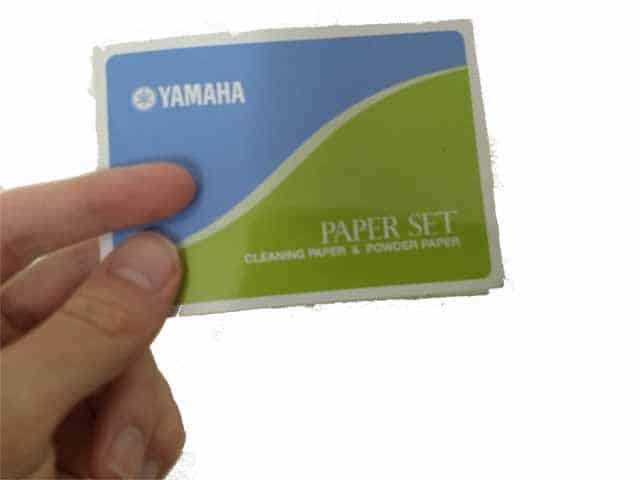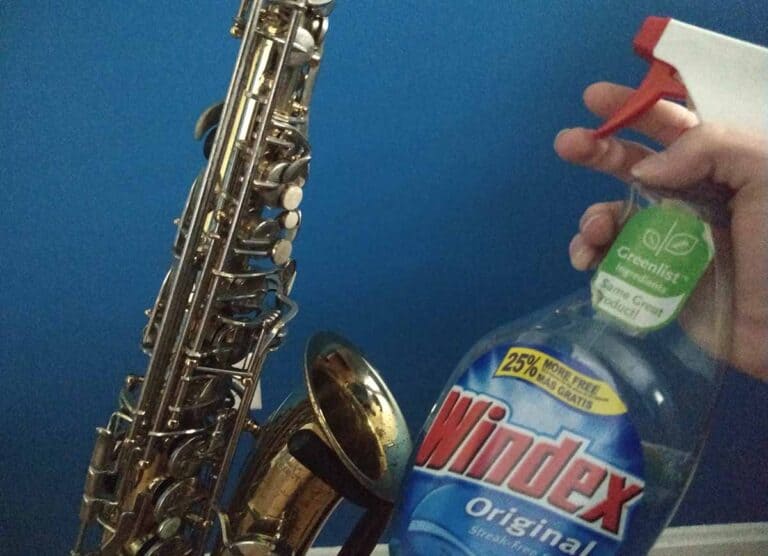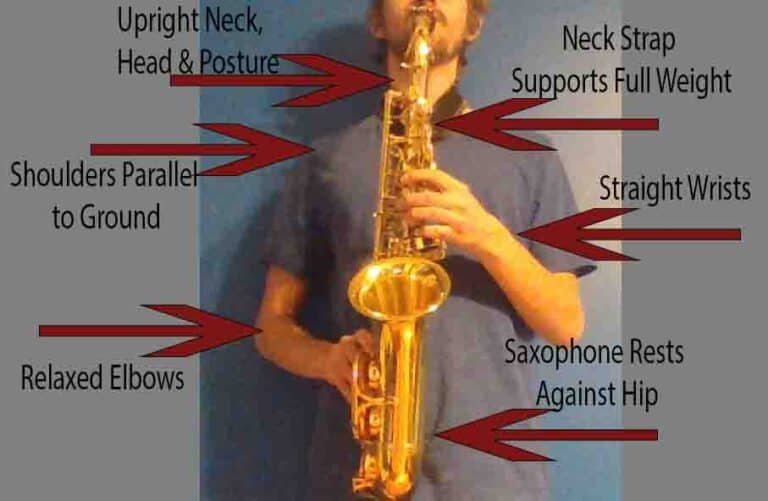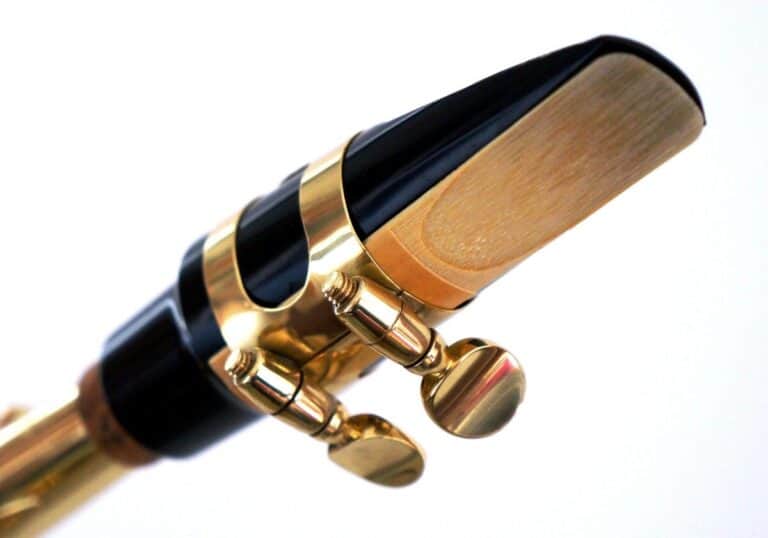How To Clean Saxophone Pads
Taking care of your pads is one of the basics of saxophone maintenance. Pads tend to get worn out more quickly when they are dirty, so it’s important to keep them clean.
To clean your pads:
- Place a fresh piece of cleaning paper under the pad,
- Press down the key above the pad,
- Gently pull the paper from underneath the key,
- Lift the key and repeat.
This is the most basic pad-cleaning method, and you should use it any time that your pads begin to stick. Your pads may become sticky often if you are not careful, so it is worth knowing this method well.
Basic pad-cleaning
You’ll need some pad-cleaning paper for this process, which you can find here. Pad-cleaning paper is made specifically for the purpose of cleaning woodwind pads. Some people use dollar bills as an alternative, but I do not recommend doing so. You never know where money has been; whatever gunk is on the dollar bill can be transferred to your saxophone’s pads.
Grab a fresh sheet of cleaning paper and stick it under the pad that you wish to clean. Then, press the key down such that it completely closes on top of the paper.
At this point, you can gently pull the paper out from under the still-closed key. The friction of this movement will allow the paper to pull sticky particles or fluids off the pad.
You will usually have to do this multiple times in succession on the same pad to get the desired results. If you keep doing this for about a minute or so, the pad should be reasonably clean by the time you’re done. You don’t have to replace the paper for each repetition; one sheet should allow you to fully clean one pad.
I recommend doing this for any pads that begin to stick. It usually isn’t necessary to regularly clean your pads unless you notice they start sticking.
How to keep your pads clean
You can keep your pads clean and prevent them from sticking by using powder paper on them the same way that you would use regular cleaning paper.
One of the best tools for keeping your pads clean is powder paper, which you can find here. You can use it the exact same way that you use the cleaning paper (described above), but the difference is that powder paper serves a preventative (rather than curative) role.
Powder paper works by leaving an unnoticeable residue on the surface of the pad. This protects it from substances which might cause damage. Use it on any pads which tend to stick frequently to stop them from sticking in the future.
How to make your pads last longer
To make your pads last longer:
- Use Key Leaves to keep keys open when they aren’t in use.
- Use Pad Life on your pads whenever they start to stick.
Using both of these should greatly sustain the life of your pads.
Using Key Leaves
The fastest pads to wear out on the saxophone are the ones on closed keys. If a key is closed by default (and only opens when you press it), the pad will always be held against the saxophone and will prevent fluid from escaping. Moisture inside the saxophone can build up against the pad and wear it out.
The solution to this problem is to use Key Leaves, which keep your keys open when your saxophone isn’t in use. These are especially useful for the G# and low C# keys, the pads of which often wear out quickly.
These only benefit keys which are closed by default, so don’t feel the need to try using them on every key.
Using Pad Life
The other way to keep your pads in good condition is to use Pad Life. This is a fluid which you can apply directly to the pads, but it causes no damage whatsoever. Rather, it keeps the pores of the pad clean and open, so that substances do not get trapped inside. This may seem counterintuitive, but in practice it is effective at maintaining the pads.
To use Pad Life, just apply 3-4 drops onto the pad you wish to clean. Try to spread the drops out evenly around the pad. You only really need to do this when you are having problems with a pad, though the manufacturer claims that using it frequently will cause no damage.
A common alternative to Pad Life is to use lighter fluid, but I personally dislike this idea.
Conclusion
Pad care isn’t particularly difficult. Even if you don’t necessarily take every measure in this article, making sure that you give some thought to pad care every once in a while will go a long way. Use the tools in this article as needed, and you may be able to avoid ever replacing your pads.
I hope this article helps you to better care for your pads!







